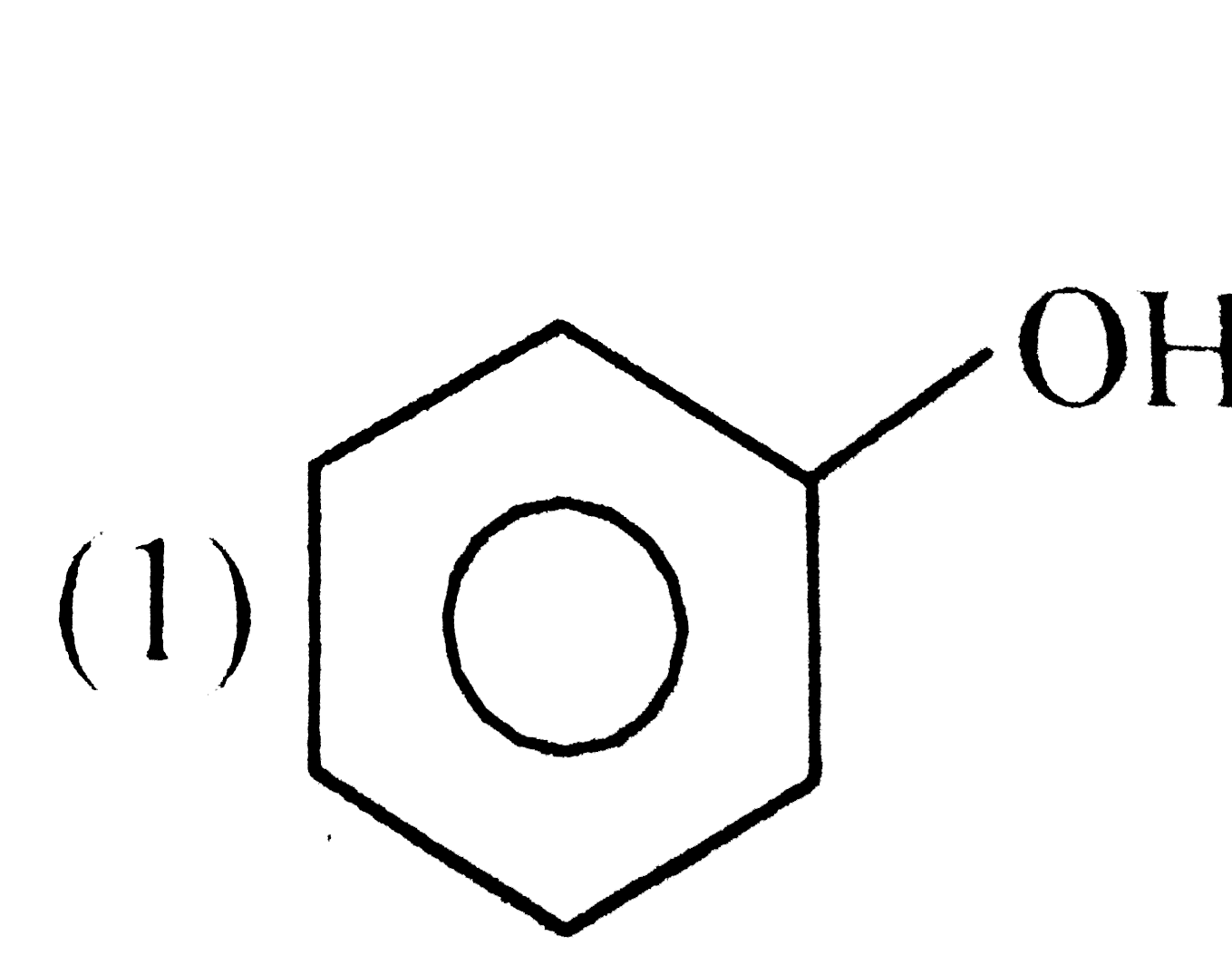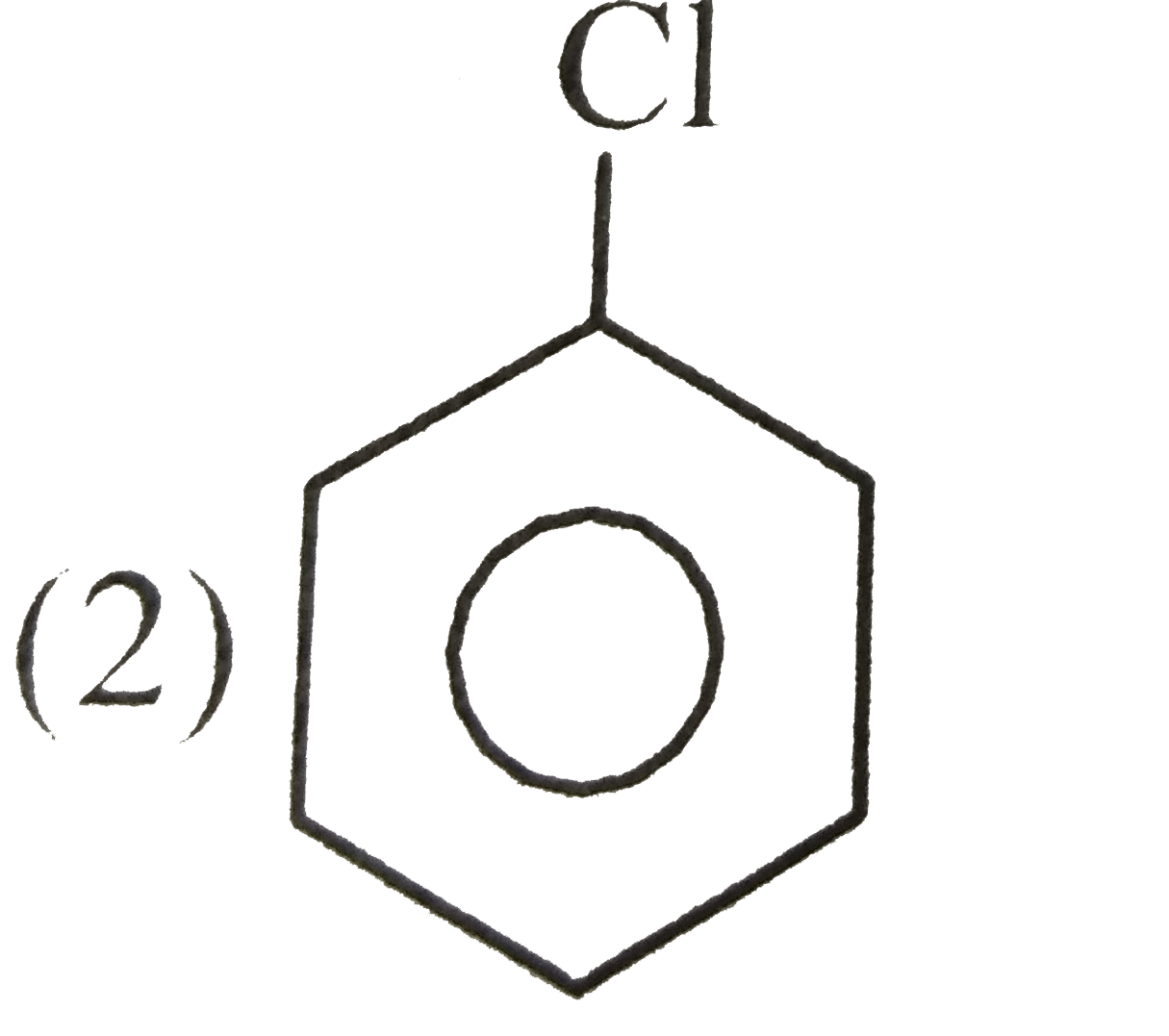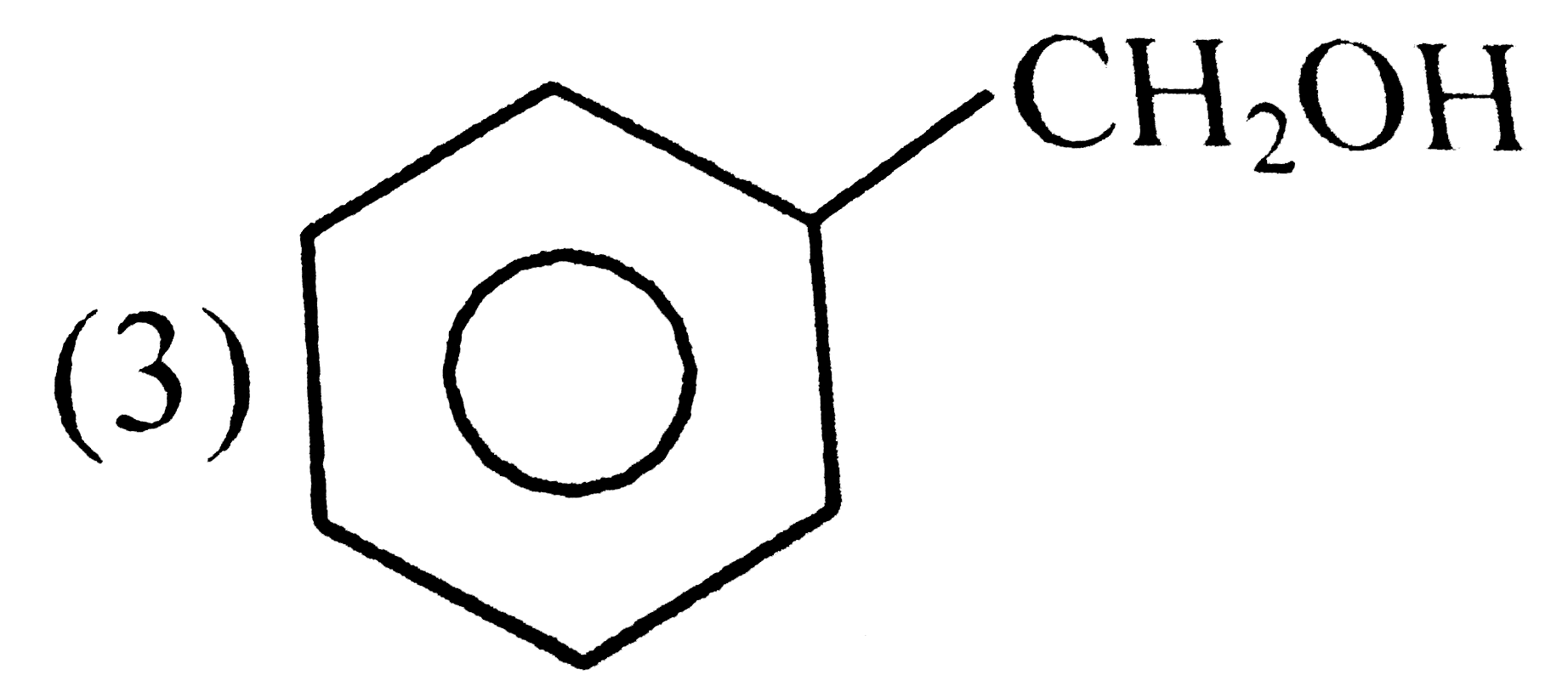Which one of the following is most reactive towards electrophilic attack?




The correct Answer is:A
To determine which compound is most reactive towards electrophilic attack, we need to analyze the effects of substituents on the aromatic ring in each of the given compounds: phenol, chlorobenzene, benzyl alcohol, and nitrobenzene.
1. Identify the Compounds:
- Phenol (C6H5OH)
- Chlorobenzene (C6H5Cl)
- Benzyl Alcohol (C6H5CH2OH)
- Nitrobenzene (C6H5NO2)
2. Understand Electrophilic Attack:
- Electrophilic aromatic substitution reactions are influenced by the substituents on the aromatic ring.
- The reactivity towards electrophilic attack is enhanced by electron-donating groups (EDGs) and diminished by electron-withdrawing groups (EWGs).
3. Analyze Each Compound:
- Phenol: The hydroxyl group (-OH) is an electron-donating group through resonance (+M effect), which increases the electron density on the aromatic ring, making it more reactive towards electrophiles.
- Chlorobenzene: The chlorine atom (-Cl) has a +M effect (due to resonance) but also has a -I effect (inductive effect), which withdraws electron density. The -I effect reduces the overall reactivity towards electrophiles compared to phenol.
- Benzyl Alcohol: The -CH2OH group is also an electron-donating group, but it does not have the same resonance stabilization as the -OH in phenol. Thus, it is less reactive than phenol.
- Nitrobenzene: The nitro group (-NO2) is a strong electron-withdrawing group (-M effect), which significantly decreases the electron density on the aromatic ring, making it the least reactive towards electrophilic attack.
4. Compare Reactivity:
- Phenol has the strongest +M effect, making it the most reactive towards electrophilic attack.
- Chlorobenzene, while having a +M effect, is countered by its -I effect, making it less reactive than phenol.
- Benzyl alcohol is less reactive than phenol due to weaker resonance effects.
- Nitrobenzene is the least reactive due to its strong -M effect.
5. Conclusion:
- Therefore, the compound that is most reactive towards electrophilic attack is Phenol.
- Phenol (C6H5OH)
- Chlorobenzene (C6H5Cl)
- Benzyl Alcohol (C6H5CH2OH)
- Nitrobenzene (C6H5NO2)
- Electrophilic aromatic substitution reactions are influenced by the substituents on the aromatic ring.
- The reactivity towards electrophilic attack is enhanced by electron-donating groups (EDGs) and diminished by electron-withdrawing groups (EWGs).
- Phenol: The hydroxyl group (-OH) is an electron-donating group through resonance (+M effect), which increases the electron density on the aromatic ring, making it more reactive towards electrophiles.
- Chlorobenzene: The chlorine atom (-Cl) has a +M effect (due to resonance) but also has a -I effect (inductive effect), which withdraws electron density. The -I effect reduces the overall reactivity towards electrophiles compared to phenol.
- Benzyl Alcohol: The -CH2OH group is also an electron-donating group, but it does not have the same resonance stabilization as the -OH in phenol. Thus, it is less reactive than phenol.
- Nitrobenzene: The nitro group (-NO2) is a strong electron-withdrawing group (-M effect), which significantly decreases the electron density on the aromatic ring, making it the least reactive towards electrophilic attack.
- Phenol has the strongest +M effect, making it the most reactive towards electrophilic attack.
- Chlorobenzene, while having a +M effect, is countered by its -I effect, making it less reactive than phenol.
- Benzyl alcohol is less reactive than phenol due to weaker resonance effects.
- Nitrobenzene is the least reactive due to its strong -M effect.
- Therefore, the compound that is most reactive towards electrophilic attack is Phenol.
Similar Questions
Knowledge Check
- Question 1 - Select One
Which one of the following is most reactive towards water?
ASodiumBPotassiumCCalciumDAluminium - Question 2 - Select One
Which one of the following is most reactive towards nucleophilic substitution reaction ?
ACH2=CH−ClBC6H5ClCCH3CH=CHClDClCH2−CH=CH2 - Question 3 - Select One
Which of the following alkenes is most reactive towards electrophilic addition reaction?
AH2C=CH2BCH3−CH=CH2C DH2C=CH−Cl
DH2C=CH−Cl
Which of the following is most reactive towards electrophillic aromatic substitution for halogen ?
View SolutionWhich of the following is the most reactive towards electrophilic substitution?
View SolutionWhich of the following is the most reactive metal?
View SolutionWhich among the following is the most reactive?
View SolutionWhich one of the following is most reactive? Li Na K Rb
View Solution

